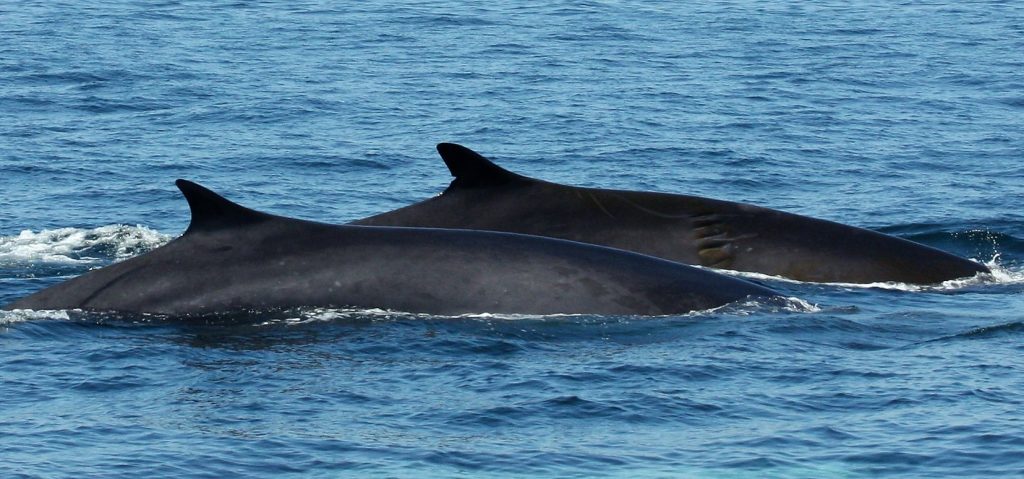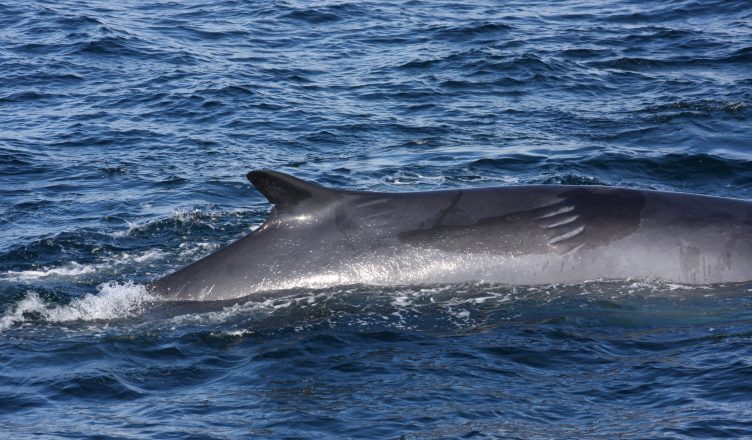My phone buzzed. I looked at the incoming message and immediately froze in disbelief. “Center for Coastal Studies has recently confirmed the death of fin whale “Ladders”. CCS calls him Ladders for the twin propeller scars on his right side. We call him Ladder, for the scar that is most obvious. Nonetheless, Ladders was our Ladder; the whale we chose to be one of our Adoptable Whales based on his longevity of sightings in and around the Jeffreys Ledge area. We also modeled our inflatable whale, used in outreach programs, after Ladder’s unique markings. Blue Ocean Society has an entire educational program focused on this particular individual fin whale. Ladder was a member of our “family”. How could he be dead?
About Ladder
Ladder was initially identified in 1984 and had been seen frequently around Jeffreys Ledge and Stellwagen Bank nearly every year since. I had first met Ladder during the summer of 1995- our first year of working on whale watching boats in NH, and six years before we founded Blue Ocean Society for Marine Conservation. Ladder’s age was unknown, although he was probably at least over 40 years of age, and possibly much older – fin whales are thought to be able to live over 100 years.
The Secret Life of Ladder
Ladder liked to get around. Text books will say that fin whales are mostly solitary animals. Over half of Blue Ocean Society’s sightings of Ladder had him associating with another fin whale, but these others were rarely the same whales. Fin whales are mostly only seen on their feeding grounds (summer) with a few exceptions of resident populations (i.e. Gulf of California). Where Ladder ventured during the winter is still a mystery, although by collaborating with other local organizations like Center for Coastal Studies and Allied Whale, we were able to get some insight into his summer wanderings.
Fin Whale Status
Fin whales are federally listed as an endangered species. Approximately 75,000 are believed to exist currently, which is about 22% of the pre-whaling population estimate. The western North Atlantic population is less than 3000 individuals. Blue Ocean Society has cataloged over 400 fin whales so far and continues to add new fin whales to our catalog annually.
What Happened?
The cause of Ladder’s death is unknown. If his body washes ashore, a necropsy will be conducted to try to determine how he died. We will post any updates as soon as we can. We are still reeling from this loss to our local fin whale population and hope that information and insights gained from Ladder over the years can better help protect fin whales in the future.
How to Help
Your support helps us do more to study fin whales. By learning more about their whereabouts and behaviors, we can work to protect these endangered animals from common threats such as entanglements and ship strikes. Thank you for your dedication to protect whales like Ladder.
Rest in peace, my friend. You will be missed, but never forgotten.
December 2018 Update: Bringing Ladder Home







So sad to see an old friend slip away.I was among many of Ladders adopted parents and was fortunate enough to spot him twice on whale watches.